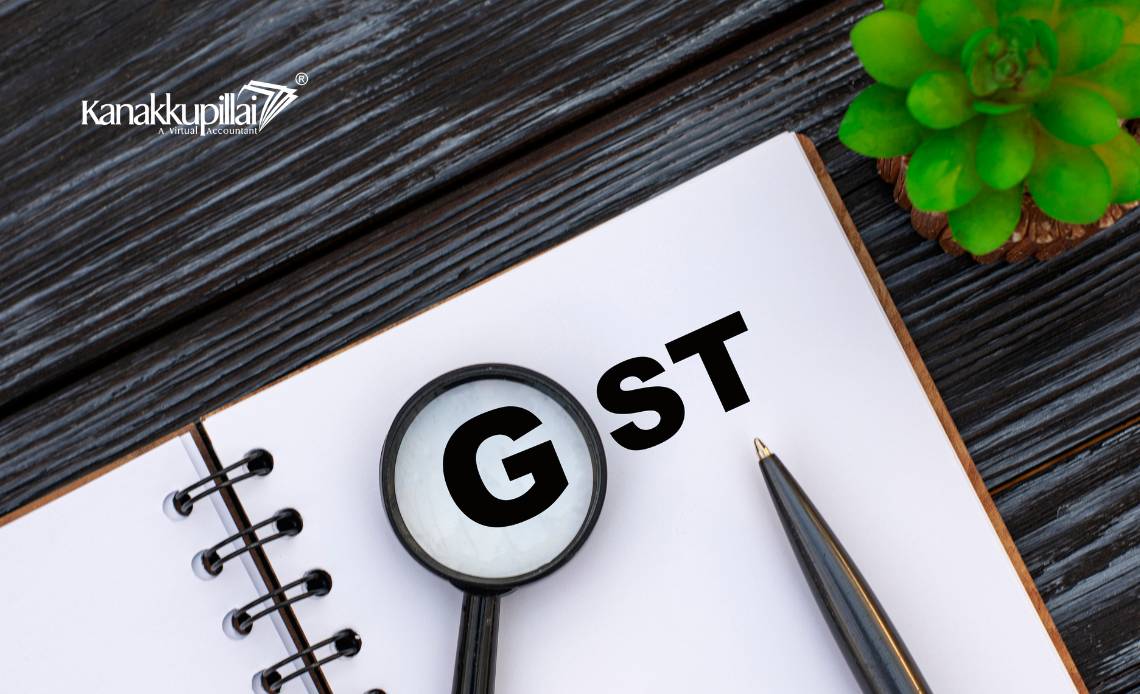The Goods and Services Tax (GST) is an indirect tax system that was implemented in India in 2017 to unify multiple and cumbersome taxes. The GST is regulated by the Central Goods and Services Tax Act, 2017, the Integrated Goods and Services Tax Act, 2017, and respective State GST Acts. Under the GST Tax regime, the taxpayers are mandated to file periodic returns to disclose their sales, purchases, tax liabilities, and input tax credits. GST return filing is important for maintaining compliance, availing input tax credits, and avoiding penalties. There are various types of GST Returns, each applicable to the different categories of taxpayers. It is important to understand these returns carefully to understand their structure, eligibility, requirements, and deadlines.
What is a GST Return?
GST Return is a document/form filed by the taxpayer registered under the GST to give the details of all income/sales and/or expenses/purchases. After filing the GST Return, you need to pay the resulting tax liability to the government.
Laws Governing GST Return
Chapter IX of The CGST Act, 2017, governs the GST Return. It says:
- Section 37 of the CGST Act, 2017, requires every registered person (except ISD, non-residents, and those under Sections 10, 51, or 52) to file GSTR-1 electronically, detailing outward supplies for each tax period by the 10th of the following month.
- Section 39 of the CGST Act 2017 mandates registered persons (except ISD, non-residents, and those under Sections 10, 51, or 52) to file monthly or quarterly returns covering inward and outward supplies, input tax credit, tax payable, and tax paid. Persons under Section 10 must file an annual return, while TDS deductors under Section 51 must file by the 10th of the following month. ISDs and non-resident taxpayers must file within 13 days after the month’s end.
- Section 44 of the CGST Act 2017 mandates that every registered person, except ISDs, persons paying tax under Sections 51 or 52, casual taxable persons, and non-resident taxable persons, must electronically furnish an annual return.
- Section 45 of the CGST Act 2017 requires taxpayers whose registration has been canceled to file a final return (GSTR-10).
Types of GST Returns in India
Not all GST returns are applicable to all taxpayers. Its applicability depends on the type of taxpayer.
| S. No. | GST Return Name | Meaning |
| 1. | GSTR-1: Return for Outward Supplies | It is a monthly or quarterly statement filed by regular taxpayers that gives details about all outward supplies (sales) made by a taxpayer. It includes invoice-wise reporting of taxable sales, debit notes, and credit notes. |
| 2. | GSTR-3B: Monthly Summary Return | It is a summary return of the inward and outward supplies. It includes details of outward supplies, input tax credit (ITC) claimed, and the net tax payable. |
| 3. | GSTR-4: Return for Composition Scheme Taxpayers | It is a yearly return filed by businesses under the Composition Scheme in which the taxpayers have to furnish the details of a summary of outward supplies, inward supplies, import of services, and supplies that attract reverse charge in this form. |
| 4. | GSTR-5: Return for Non-Resident Taxable Persons
|
It is filed by non-resident individuals or entities conducting business in India. It summarizes the details of outward supplies, inward supplies, credit or debit notes, tax liability, and the taxes paid.
|
| 5. | GSTR-5A | It is a mandatory return that provides a summary of the outward taxable supplies and tax payable furnished by the Online Information and Database Access or Retrieval (OIDAR) services provider of the services:
It is pertinent to note that even if there is no business activity, it is mandatory to file a GSTR-5A Return. |
| 6. | GSTR-6: Return for Input Service Distributors (ISD) | It is a mandatory return containing the details of the Input Tax Claim (ITC). If no ITC is available, a Nil Rerun must be filed. |
| 7. | GSTR-7: Return for Tax Deductors at Source (TDS) | It contains the details about the TDS, TDS liability payable, payments made by the TDS deductor, and the TDS refund claimed (if any). |
| 8. | GSTR-8: Return for E-Commerce Operators | It is a statement of Tax Collected at the Source (TCS) containing the details of the taxable supplies made through an e-commerce platform. |
| 9. | GSTR-9: Annual Return
|
It is filed once each financial year and contains details about purchases made, sakes, ITC or Refund claims, demand creation, etc. |
| 10. | GSTR-9C: Reconciliation Statement | It is a reconciliation statement filed along with GSTR-9. The Chartered Accountant or the Cost Accountant must duly verify and digitally sign it. |
| 11. | GSTR-10: Final Return | In this return, the taxable person has to provide a statement of stocks held immediately prior to the cancellation or surrender of their GST registration. |
| 12. | GSTR-11: Return for UIN Holders | This return is filed by UIN (Unique Identification Number) holders, although it is not mandatory. Its purpose is to claim a refund under GST for goods and services purchased. The return provides details of inward supplies received and refunds claimed. |
Eligibility and Deadline
| S. No. | GST Return Name | Who will file the Return? | Deadline to file the Return |
| 1. | GSTR-1: Return for Outward Supplies |
|
Monthly: 11th of the following month.
Quarterly: 13th of the month of the following quarter.
|
| 2. | GSTR-3B: Monthly Summary Return | All regular and casual Registered Taxpayers | Monthly: 20th of the following month.
Quarterly: 22nd and 24th of the month following the quarter. The deadlines are different for different states and UTs. |
| 3. | GSTR-4: Return for Composition Scheme Taxpayers | Taxpayers registered under the Composition Scheme. | The 30th April of the following month of the financial year. The government of India can extend it from time to time. |
| 4. | GSTR-5: Return for Non-Resident Taxable Persons | A non-resident is a foreign taxpayer who conducts business transactions in India. | For the period for which Non-Resident Taxable Persons have obtained registration within seven days after the date of expiry of registration.
In case the validity of registration is more than one month, monthly return (s) should be filed by the 13th of the month. |
| 5. | GSTR-5A | Non-Resident Online Information and Database Access or Retrieval (OIDAR) | 20th of the month following the tax period to which the return pertains or by the date as may be extended by the Commissioner. |
| 6. | GSTR-6: Return for Input Service Distributors (ISD) | Input Service Distributors | On or before the 13th of the following month. |
| 7. | GSTR-7: Return for Tax Deductors at Source (TDS) |
|
10th of the following month. |
| 8. | GSTR-8: Return for E-Commerce Operators | This is to be filed by every registered e-commerce operator who is required to collect TCS on the outward supplies of goods and/or services. | 10th of the following month. |
| 9. | GSTR-9: Annual Return
|
|
31st December of the following relevant financial year. |
| 10. | GSTR-9C: Reconciliation Statement | Taxpayers with an annual turnover exceeding ₹5 crores. | 31st December of the relevant financial year. |
| 11. | GSTR-10: Final Return | Taxpayers canceling their GST registration. | Within three months from the date of cancellation of GST registration or three months from the date of the order canceling the GST registration. |
| 12. | GSTR-11: Return for UIN Holders |
Which are not liable to be taxed in India. |
28th of the following month |
Why Choose Kanakkupillai for GST Return Filing?
Kankakkupillai is your go-to partner for GST returns. We offer knowledgeable support and guarantee a smooth and correct return filing process. We provide:
- Personalized Approach – At Kanakkupillai, we understand that every individual and business is different. That’s why we offer customized solutions for all. Our professionals will walk you through the filing process step by step. Our goal is to make filing returns as stress-free as possible.
- Expertise and Experience – Kanakkupillai’s years of tax filing experience give you unparalleled knowledge. Our team is knowledgeable about the intricacies of GST Returns and other associated tax Returns, so we can provide trustworthy guidance and support.
- Timely Filing and Compliance – Filing your tax returns on time is important to avoid penalties and interest charges. Kanakkupillai ensures that your GST return is filed within the deadlines.
- Hassle-Free Process – We aim to simplify the tax filing process. Our platform and team make sure that the paperwork, calculations, and submissions are handled professionally.
- Transparent Pricing – At Kanakkupillai, we offer cost-effective and transparent pricing for our GST Return filing services. There are no hidden fees, and we ensure complete clarity on the costs involved.
Frequently Asked Questions
1. What is a GST Return, and why do I need to file it?
A GST Return is a document that businesses registered under GST must file to report their sales, purchases, tax collected, and tax paid. Filing GST Returns on time helps taxpayers and businesses stay compliant, claim tax benefits, and avoid penalties.
2. Who should file GST Returns in India?
Every registered business under GST must file GST Returns. The type of return depends on the nature of the business, such as regular taxpayers, those registered under the composition scheme, non-residents, and e-commerce operators.
3. What is the difference between GSTR-1 and GSTR-3B?
GSTR-1 is a return where businesses report details of their sales (outward supplies). GSTR-3B is a summary return where businesses declare their sales, purchases, tax liability and input tax credit.
4. What is the QRMP Scheme, and how does it help small businesses?
The Quarterly Return Monthly Payment (QRMP) Scheme allows small businesses with an annual turnover of up to ₹ five crores to file GSTR-1 and GSTR-3B quarterly while paying taxes every month.
5. Do I still need to file GST Returns if I have no sales in a month?
Yes, even if your business has no transactions, you must file a Nil Return.
6. Who needs to file GSTR-9, and what is its due date?
GSTR-9 is the annual GST Return that regular taxpayers (except those under the Composition Scheme) must file. It summarizes the total sales, purchases, taxes paid, and input tax credits for the financial year. The deadline to file GSTR-9 is December 31 of the following financial year.





